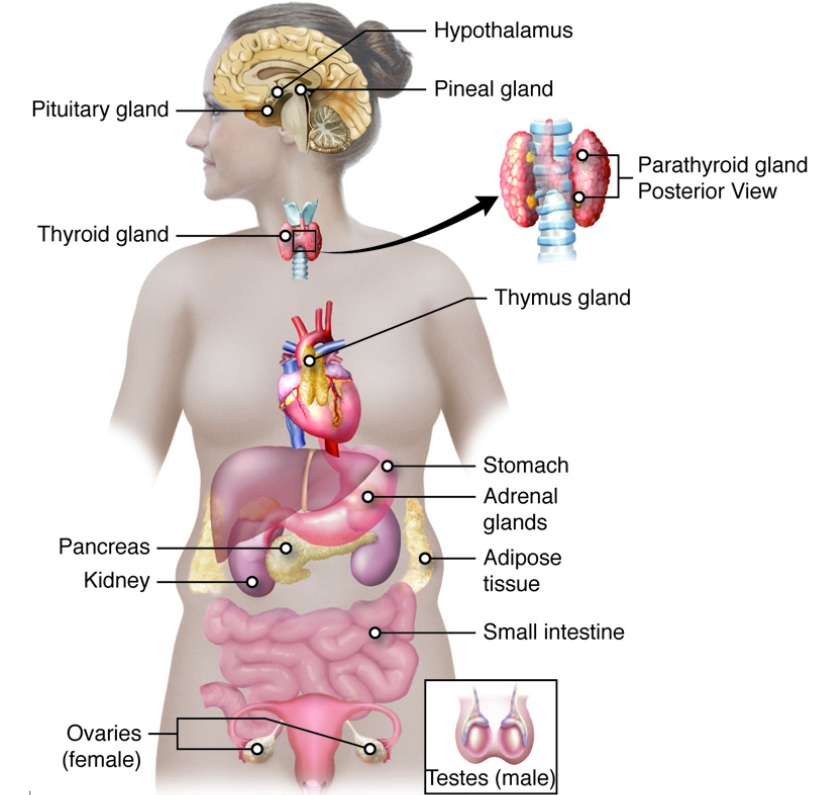How well do you remember your biology lessons? Still fresh in your mind, or were you daydreaming through class? Does the term endocrine system ring a bell? If not, no stress! I’ve got you covered with a quick and simple rundown. Let’s dive in! 😊
Your endocrine system is a network of glands that produce and release hormones. These hormones travel through your bloodstream, telling your organs, skin, muscles, and tissues what to do and when.
The primary role of the endocrine system is to maintain balance by monitoring hormone levels and adjusting as needed. With over 50 different hormones at work, they influence nearly every aspect of your health, including:
- Metabolism – How your body converts food into energy.
- Homeostasis – Regulating blood pressure, blood sugar, body temperature.
- Growth & Development – Essential for physical changes from infancy to adulthood.
- Sexual Function & Reproduction – Governing fertility and hormone-driven processes.
- Sleep-Wake Cycle – Helping regulate when you feel alert or sleepy.
- Mood – Influencing emotions and mental well-being. [1]
Even tiny shifts in hormone levels can trigger significant effects, often leading to noticeable symptoms. A well-functioning endocrine system is essential for your health and well-being.

Picture: Diagram of the Endocrine System Glands. This work by Cenveo is licensed under a Creative Commons Attribution 3.0.
That was just a quick refresher! 🙂 But what’s really important and the main focus of this article is something called Endocrine-Disrupting Chemicals (EDCs). Have you heard of them?
What Are Endocrine-Disrupting Chemicals (EDCs)?
These are natural or human-made chemicals that can mess with your hormones by mimicking, blocking, or interfering with them, which can lead to various health issues.
You can find these chemicals in everyday items like cosmetics, food packaging, toys and others. EDCs can enter your body through the air you breathe, the food and water you consume, and through your skin.
There are over 350 000 chemicals and mixtures of chemicals registered worldwide and scientists estimate that at least 1,000 of them could disrupt hormones and some more hundreds are under assessment as Endocrine Disrupting. [2,3,4] Even tiny amounts of these chemicals may affect your body, as your endocrine system relies on small hormone changes to function properly.
Most-common EDCs:
- Phthalates – they help make plastics flexible. Many cosmetic products contain phthalates such as nail polish, hairspray, shampoo, lotions and products with fragrance.
- Bisphenol A (BPA) – is used in plastic manufacturing, food packaging, and toys.
- Dioxins – are toxic chemicals released during manufacturing, waste burning, and wildfires. They can pollute the air and environment.
- PFAS (Per- and Polyfluoroalkyl Substances) – are found in nonstick cookware, food packaging, water-resistant fabrics, waterproof mascara and long-lasting lipsticks. [2]
- Parabens – are used as preservatives in many cosmetic products to make them last longer. [5]
You can read more about these in our blog section Harmful Ingredients: https://green-gate.eu/blog/category/harmful-ingredients/
And now the absolute most important: How can you reduce your exposure?
- Choose natural personal care products with fewer synthetic ingredients.
- Limit food and processed foods that come in plastic packaging.
- Avoid using plastic containers for heating food.
- Ventilate your home regularly to reduce indoor pollutants.
Awareness and small lifestyle changes can help you reduce exposure to these potentially harmful chemicals, protecting your endocrine system and your overall health.
Sources:
[1] https://my.clevelandclinic.org/health/body/21201-endocrine-system
[2] https://www.niehs.nih.gov/health/topics/agents/endocrine
[3] https://pubmed.ncbi.nlm.nih.gov/31968937/
[5] https://www.sciencedirect.com/science/article/abs/pii/S0303720718301060


0 Comments